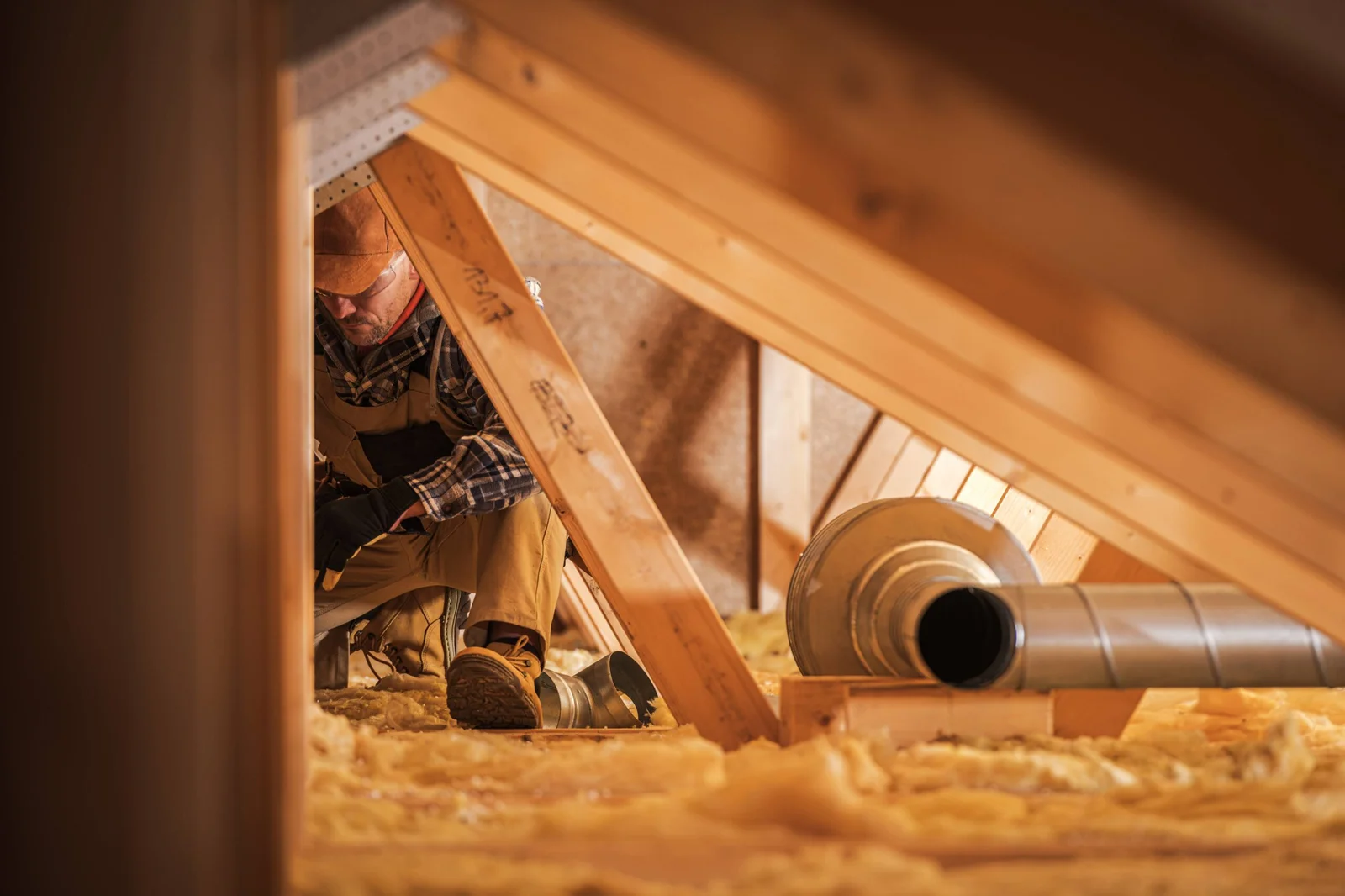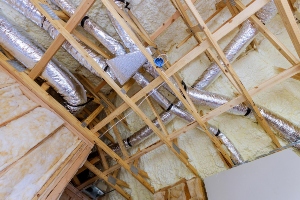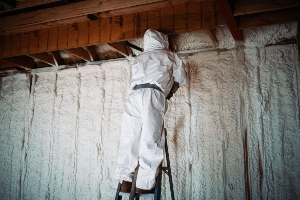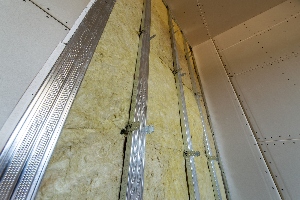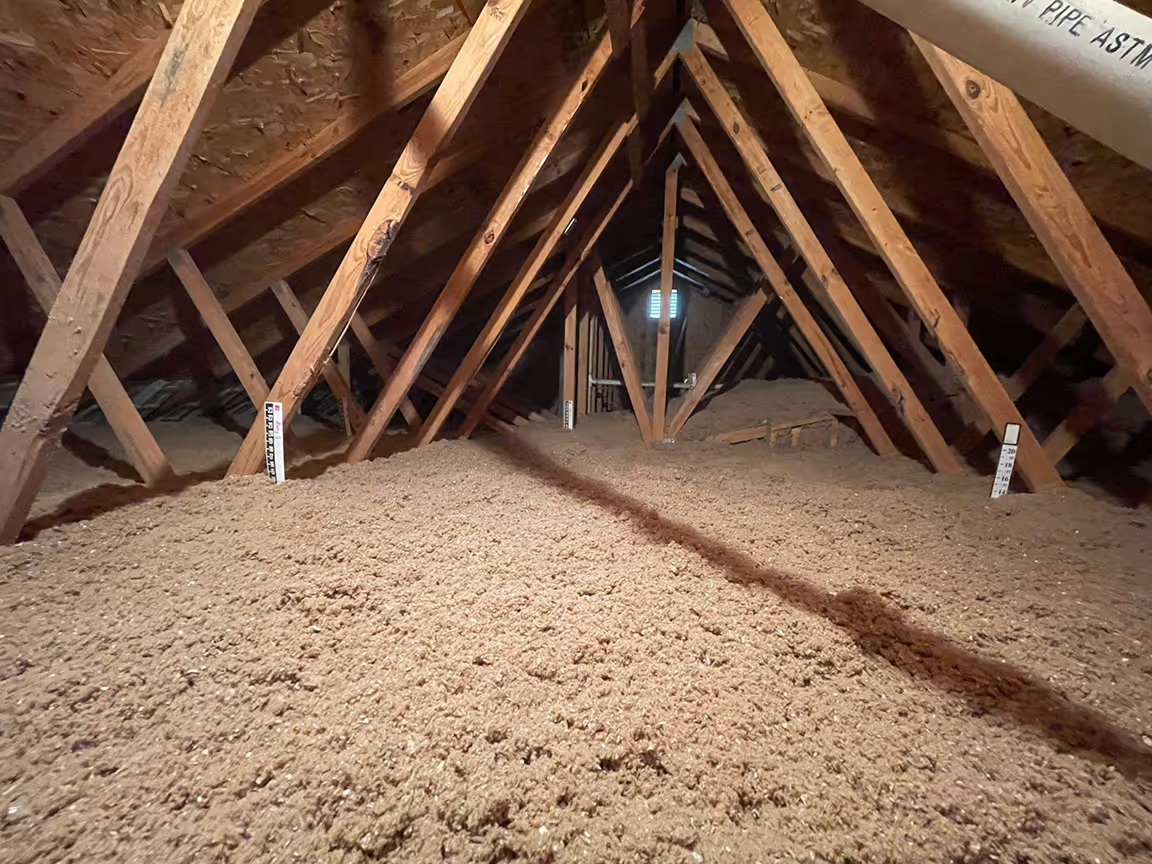Cold drafts and high heating bills can make the season less enjoyable. But there’s a simple solution: proper insulation. Good insulation helps keep your home warm in winter and cool in summer, saving you money on energy costs. It acts like a barrier, stopping heat from escaping your house. This means your heating system doesn’t have to work as hard to maintain a comfortable temperature.
Winter-proofing your home with insulation isn’t just about comfort. It’s also about saving money and being kind to the environment. By using less energy, you reduce your carbon footprint. Plus, a well-insulated home can increase its value if you ever decide to sell.
Understanding Insulation and Heat Retention
Insulation keeps your home warm and cozy during cold weather as it helps trap heat inside and keeps chilly outside air out. Let’s explore how insulation works and why it’s so important.
The Science of Warm and Cold Air
Warm air naturally moves to cooler areas and in winter, the heat in your home tries to escape outside. Good insulation also stops cold air from getting in. Insulation acts as a barrier to slow down this heat transfer and works by trapping tiny pockets of air within its fibers or foam.
These air pockets make it hard for heat to pass through, so the more air pockets, the better the insulation works. This is why fluffy materials like fiberglass are so good at keeping homes warm.
Types of Insulation Materials
You have several choices when it comes to insulation materials and each type has its specific strengths:
- Fiberglass: Common and affordable
- Cellulose: Eco-friendly as it’s made from recycled paper products
- Spray foam: Great for filling small gaps
- Mineral wool: Fire-resistant and good for sound-blocking
Role of Attic Insulation in Preventing Heat Loss
Your attic is a key area for insulation because heat rises, therefore, a lot of warmth can escape through the roof. Good attic insulation helps keep this heat inside your living space and can save you up to 15% on heating costs. It also helps prevent ice dams on your roof in winter which form when heat leaks into the attic and melts snow on the roof.
To insulate your attic, seal any air leaks, add insulation between and over floor joists, and don’t forget to insulate the attic access door
Sealing the Envelope: Air Leaks and Weatherproofing
Air leaks can make your home cold and drive up heating costs. Sealing gaps and upgrading windows helps keep warm air in and cold air out.
Identifying and Sealing Drafts
Look for air leaks around windows, doors, and other openings by moving your hand along the edges to feel for drafts on a cold day.
Common leak spots include:
- Window and door frames
- Electrical outlets
- Pipe entrances
- Attic hatches
Seal any small gaps with caulk and use foam sealant for larger openings. Apply weather-stripping to movable parts like doors and windows and add door sweeps to block drafts under exterior doors.
Benefits of Weather-stripping and Caulk
Weather-stripping and caulk are cheap, easy ways to stop air leaks. Weather-stripping comes in different materials such as foam tape, V-strip, and door sweeps. Caulk is great for sealing cracks in non-moving areas as it’s flexible and long-lasting. Use it around window frames, baseboards, and other gaps. Both improve comfort by stopping cold drafts. They also keep out pests and moisture.
Upgrading to Energy-Efficient Windows
New energy-efficient windows can cut heating costs by up to 15% by trapping heat inside and blocking cold air. The initial cost is high, but you’ll save money over time.
Key features to look for:
- Double or triple panes
- Low-E coatings
- Argon gas filling
- Warm edge spacers
If new windows aren’t in your budget, try these options:
- Add storm windows
- Use thick curtains
- Apply window insulation film
These boost insulation without replacing the entire window.
Protecting Your Home from Winter Hazards
Winter can be tough on houses but here are some key ways to winter-proof your house.
Preventing Ice Dams and Roof Damage
Ice dams form when heat escapes through your roof, melting snow that refreezes at the edges. This can lead to water backing up under shingles and causing leaks.
To prevent ice dams:
- Add insulation to your attic floor to keep heat inside
- Seal any air leaks between your living space and attic
- Ensure your attic is well-ventilated
Clear snow off your roof after big storms using a rake with a long handle to safely remove snow while standing on the ground. Avoid chipping away at ice dams with a blunt tool as this can damage your roof.
Avoiding Frozen Pipes with Proper Insulation
Frozen pipes can burst and cause major water damage, especially pipes in exterior walls, attics, and crawl spaces.
To prevent freezing, add foam pipe insulation to exposed pipes and keep the heat at least 55°F, even when you’re away. Open cabinet doors under sinks on cold nights and let faucets drip slightly in freezing weather You can also add extra insulation to walls with plumbing and seal any cracks or holes where cold air can get in around pipes.
Gutter Maintenance Before Winter
Clean gutters are key for proper drainage as clogged gutters can lead to ice dams and water damage. To prepare your gutters for winter remove all leaves and debris, check that gutters are securely attached, and ensure downspouts direct water away from your foundation
Consider adding gutter guards to keep debris out and slope gutters slightly towards the downspouts for good drainage. It’s also advised to trim any overhanging tree branches that could fall on your gutters during winter storms.
Maintaining Comfort and Efficiency During Winter
Winter-proofing your home goes beyond insulation and smart heating strategies are key to staying cozy and safe during cold months.
Optimizing Your Heating System
Check your furnace filter monthly and replace it as needed. A clean filter helps your heating system run more efficiently, saving you money on energy bills. Schedule a professional tune-up for your furnace before winter hits as this can catch small issues early.
Consider upgrading to a programmable thermostat that you can set to lower temperatures when you’re asleep or away, then warm up just before you wake or return home. This can cut your heating costs without sacrificing comfort.
Smart Use of Ceiling Fans and Thermostats
Set your ceiling fans to rotate clockwise in winter to push warm air down from the ceiling so it is distributed evenly throughout the room. Be mindful to keep your thermostat at a consistent temperature as constantly adjusting it up and down can waste energy. Aim for 68°F (20°C) when you’re awake and active at home.
For extra savings, dress in warm layers indoors so you can keep your thermostat a few degrees lower while staying comfortable.
For more information on upgrading your home’s insulation, call an expert for advice or help.

